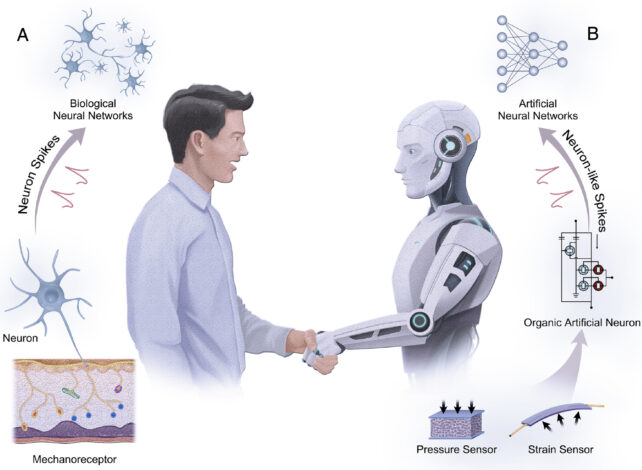Engineers at the University of Massachusetts, Amherst have developed an artificial neuron like no other.
In experiments, their newly created model was able to directly communicate with a biological neuron in a remarkably lifelike, 'quiet' way.
The 'cell'-to-cell flow of electrical information involves about the same voltage and energy consumption as natural neuron communication.
The breakthrough is a first for the field, claim researchers at UMass Amherst, somewhat collapsing the distance between our brains and our computers.
Related: Scientists Have Created a Functional Brain Cell Based on a Mix of Salt And Water
Scientists have been developing synthetic brain cells and connecting them into complex machines for years now, but their simple functions pale in comparison to those in our brains.
This newest creation is closer than ever to mimicking the real thing.
"Previous versions of artificial neurons used 10 times more voltage – and 100 times more power – than the one we have created," says engineer Jun Yao.

That's like an artificial neuron 'screaming' at the top of its lungs to a typical human neuron. All that hollering takes a lot of energy, and if it's too loud, the receiver may be overwhelmed and miss the crux of the message.
What Yao and colleagues have created is an artificial neuron that essentially can 'whisper' to our own.
"Ours registers only 0.1 volts, which is about the same as the neurons in our bodies," says Yao.
Other scientists have coaxed artificial neurons to communicate with real brain cells in less natural ways – for example, through the use of light.
But this new breakthrough replicates a more conventional system.
The key in this case was to use protein nanowires grown by bacteria. Because these structures are naturally derived, they can survive in wet environments like real neurons.
Models like these "advance the potential," write Yao and colleagues, for "neuromorphic integration."
"We currently have all kinds of wearable electronic sensing systems, but they are comparatively clunky and inefficient," explains Yao.
"Every time they sense a signal from our body, they have to electrically amplify it so that a computer can analyze it. That intermediate step of amplification increases both power consumption and the circuit's complexity, but sensors built with our low-voltage neurons could do without any amplification at all."
The study was published in Nature Communications.
